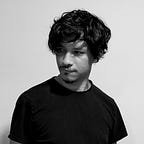One Design Framework to Rule Them All
With their similarities and differences, iOS and Android interfaces share a deeper connection than you think.
It’s common to hear iPhone users say that Android is difficult to use. It’s true. But, and this may shock you, the reverse is also true — when an Android user tries an iPhone for the first time. We expect natural behavior when interacting with our phones and when that behavior is different from what we expected, we get frustrated.
We call these ‘natural behavior’ patterns, and they help users with the hard job of understanding an interface. Every platform has it’s own patterns and the melding-together of these patterns forms design guidelines, which differ from each other depending on their user behaviors.
But that’s changing. We are reaching a point where different mobile patterns are getting closer to convergence regardless of platform.
I’m not saying mobile platforms will be identical in future. They will still look different from one another, but, in the end, feel and work the same. How do we will get there? Let me tell you a story that not many people know and some have even forgotten.
The rise of the “iOS killer”
As you may know, by 2008, there was already a challenge to reinvent the iPhone and it was divided on three fronts. Some wanted a quality device, others, a capable OS and others, a deep connection with the user. One thing connected all three: user interface.
Since then, we keep seeing attempts to approach the perfect mobile interface — the ultimate unified system — for every digital device out there. One of the first was Matias Duarte (former Palm’s VP of Human Interface and User Experience). With one forgotten platform they were close to really competing with iOS: Palm’s webOS.
Palm webOS didn’t just introduce new visual interface aspects, but also new patterns for a mobile platform that was in diapers. Matias Duarte and his team were nailing it. Until Palm was bought by HP, stopping them in their tracks, reducing the platform’s possibilities for expansion and making Matias moved to Google.
Matias started a complete revolution at Google pushing Android into a new era. Interface patterns, cards navigation and a formal Floating Action Button (the big rounded button) that were introduced with webOS, were made official with Material Design. Design guidelines to make beautiful and consistent apps between not only one platform, but every platform. The ultimate unified system.
“The whole point of consistency (and conventions) is to make it easier on users to understand and use things.
Design guidelines are there to help you understand them, especially if you’re not from around here.”
— Matias Duarte, 2013.
A Maturing Platform
Last year was a new chapter in Material Design life and, with the whole designer community using it, it’s now reaching maturity. Designers are, by now, completely aware of the limits of the platform and they are expanding the frontiers with new ideas without damaging the experience and soul of the platform. After all, they were just guidelines.
Matias Duarte’s team was expecting this since the beginning. It was a natural step for the platform and they embraced it as an opportunity to improve the platform. The new chapter was official when the Material Design team launched material.io.
People in the design community were aware of this. Months ago, they started seeing changes that some, mostly the purists, weren’t happy to see. Bottom navigations, splash screens or granular permissions were some of the alien interface patterns Android gained in a few months.
“Is MD just for Android? We are starting to see more apps that are not from Google, that are even radically different, that are able to adapt either full or aspects of Material, and we are starting to see some of those ideas sprinkling through arrive to different context”
— Richard Fulcher, Design Manager at Google
That was another natural step. The system was already suffering from a lack of options in some areas and some designers were making hard decisions when facing those limits. The Material Design team needed to make a risky decision too. They didn’t only take a pattern from another platform that had solved the problem, but they adapted it to the platform without diminishing its personality.
What’s next?
As Google did with Material Design, seeing platform patterns as tools, completely changes the way we see and use them. Like a normal pencil and a pen, two objects that are used to write and draw on specific surfaces. The difference between them are their patterns. You can erase what you draw with the pencil, but the pen gives you a more solid line. Choose wisely one pattern from both objects, put them into a single object and you get a pen with an eraser, an improved object.
This is not just about iOS or Android, both platforms have evolved in their own way and are constantly learning from each other. You can take the best from both and adapt it to do something better. The evolution will continue for sure. One day, we will have the option to make one design for all of them. Until then, keep adapting.
—
Side-note: The logic path (when having small budget with short time), is launching the product with the same design (and engineering) on every platform. It is tempting to have your product everywhere and ready with low costs, but that might hurt you in the long term. My advice would always be to prioritize one platform over the others, depending on your needs. I also still believe, despite the above, that if you can launch on both platforms, it’s imperative to adapt your product to each of them.
